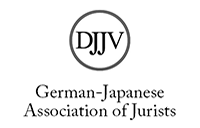The Test for Standing in Administrative Matters
Contemporary Developments in Japan and the Case of ‘Nōkotsu-dō’
Abstract
The contribution analyses contemporary developments in the test for standing in administrative matters in Japan. This standing test imposes on the judicial review system the difficult task of balancing the need for relief from unlawful dispositions with the efficiency of administrative affairs. The article demonstrates the application of the test in light of a hypothetical scenario involving ‘nōkotsu-dō’ (納骨堂). The term may be translated as a “cinerarium”. These are places where people keep their loved ones’ ashes and which can be visited to honor and remember that person. Thus, these facilities perform a function somewhat similar to a gravesite. They are in high demand due to Japan’s super-aging society, but their erection in a given location is often controversial. The approval of the location and operation of these facilities has been challenged by local residents and businesses, bringing into question the test for their standing in such matters. The cases are examples of administrative litigation governed by the provisions of the Administrative Case Litigation Act. The Act applies to judicial review of dispositions made by Japanese administrative agencies at both the national and local government levels. The test for standing in administrative cases has been controversial in Japan amongst scholars, judges and lawyers since the Act was adopted in 1962. The article analyses the legal problems associated with the evolution of nōkotsu-dō in order to highlight the application of the test for standing and for the restriction of grounds in administrative matters. This provides an opportunity to consider the ongoing criticism of the test, despite reforms made to the legislation in 2004.
(The editors)






